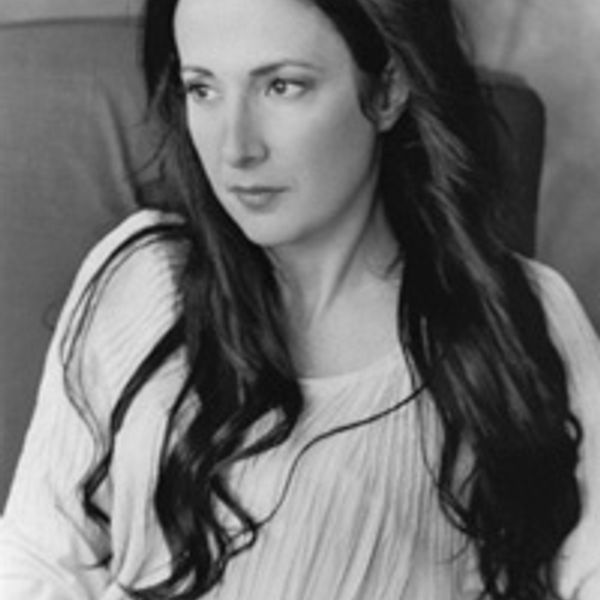Art by Jin Suk
Introduction
part of A Portfolio of British and Irish Poems
Though globalization has shrunk the world, certain pockets of culture remain strangers to each other. This is largely the case with contemporary British and American poetry: despite their long, intertwined history, they have pulled apart in recent decades and now seem to be in a condition of near-hermetic coexistence.
This state of things, undisputed among those with a foot in both worlds, is paradoxical and surprising. In the past there has been a significant give-and-take between the two traditions—for much of the twentieth century, a prolific cross-cultural exchange, both direct and indirect, took place. Robert Frost, who met and was inspired by Edward Thomas, Rupert Brooke, and Robert Graves, is an example of the former. More common, though, was long-distance contact, particularly in America, whose poets were inclined to visit and revisit their personal heroes of English verse. Elizabeth Bishop, for instance, cited George Herbert as one of her early and enduring influences. Similarly, current American poets often point to the Renaissance, the Romantics, or the Victorians. Robert Pinsky has mentioned John Keats and Fulke Greville as important to him; Tom Sleigh, when asked about his literary fathers and mothers, specified seven, among them, “Robert Browning for his technique and Philip Larkin for his sense of extremity.”
In the United Kingdom, the age gap between poets and their American influences is more likely to be counted in decades than centuries. Bishop, Berryman, and Lowell have had a widespread effect on younger British poets. In 1994, when the so-called “New Generation” poets (selected as part of a highly visible promotion of contemporary U.K. poetry) were asked to identify three major influences, five of the twenty named Bishop and three Lowell. Jamie McKendrick, a member of the New Gen included in this AGNI supplement, was one who cited Bishop, though he also counts Dickinson, Stevens, Crane, and Berryman among those who had an impact on him. As he puts it, “Although Larkin and Hughes were obviously very good, I don’t think they spoke as fully to the experiences of my generation as did that older generation of Postmodern Americans.”
It was in the years just prior to the New Gen promotion that poetry in Britain shook off the comparatively dull spell of the Eighties, when a certain kind of academic style had been the norm. So what changed? Simon Armitage, whose “Sympathy” series appears in this issue, is one of the New Gen who helped to refresh the language, with a youthful, slangy vocabulary and loose-limbed rhythms reminiscent of Frank O’Hara. In other respects, Armitage’s verse shares an edginess with Weldon Kees, whose work he has edited. Given the hold American exemplars had on his contemporaries, is it possible that, indirectly, American poetry helped the Brits out of their rut?
Missing from this discussion so far is Irish poetry, which belongs in a distinct category, both for its relation to the British and to the American. The latter certainly left its mark. Yeats, for example, was inseparable from his copy of Leaves of Grass; more recently, strands of Northern Irish poetry—Heaney, Muldoon, and Paulin are good examples—have been powerfully affected by Frost, and the Heaney of Field Work reflects his strong connection to Lowell. Unlike its British counterpart, poetry in Ireland has been consistently dynamic since Yeats. Irish poetry also doesn’t feel as absent in the States, perhaps because there are many Irish poets living and teaching there. Or maybe the historical impact of Irish-English on American speech has established an affinity, whereby the music of, say, Eavan Boland or Derek Mahon is more easily picked up by the American ear.
Nick Laird and Leontia Flynn, the youngest poets included in this supplement, are both from the north of Ireland. They write beyond the tall shadows cast by Heaney and Muldoon. Less circumscribed by political context, but still large in scope and aware, their poems seem to usher in another phase of innovative Irish writing.
~
The following selection doesn’t aspire to be more than a snapshot of new work. Because there is always some arbitrariness involved in the poems that cross—or don’t—an editor’s desk, those we have collected over the last six months (two of which have appeared in Poetry London) only partly reflect the variety of current activity. These voices, however, are indicative of trends in Britain and Ireland: a lively breadth of language, and a seriousness that eschews pretension. In another season, we might expect to have seen work by, among others, Jo Shapcott and Lavinia Greelaw from England; Colette Bryce from Northern Ireland; Carol Ann Duffy, Don Paterson, and Kathleen Jamie from Scotland.
What, if anything, distinguishes current American poetry from its match in Britain and Ireland? There are fewer differences than one might think. Free verse is popular on both sides of the Atlantic, as are traditional forms (three sonnets and one sestina are present here). There are the usual variations in tone and sound, ranging from conversational flatness to ecstatic Hopkins-like buzzing. The main differences are to be found less in style and form than in the fundamental disparities of language and landscape. Armitage’s Yorkshire dialect in “Sympathy” is not something likely to be heard in the States—though we hope it carries to the American ear. The relationship to landscape in Alice Oswald’s “Dunt” is unmistakably British, infused with the ghost of Ted Hughes both in language and image. And Jamie McKendrick’s wit, irony, and erudition are recognizably British and subtly different from U.S. equivalents.
To say that there is no communication or mutual awareness between the poetry worlds of the U.K. and the U.S. would be an exaggeration. Several Americans are published in Britain, and the ones who actively teach workshops and give readings—among them Mark Doty, Jorie Graham, Marilyn Hacker, Billy Collins, and Sharon Olds—are well known and esteemed. But to many British and Irish readers, these names are it, standing in for the full range of American voices. In the east–west direction, the traffic seems even sparser, with greater Irish presence than English, Scottish, or Welsh. (Glyn Maxwell, Michael Hofmann, Robin Robertson, and Armitage are the few exceptions who come to mind.) Fortunately, magazines such as AGNI, Poetry London, and some others are beginning to pay better attention to international voices. Likewise, more reading series (e.g., The Troubadour and The Wordsworth Trust in England, and Blacksmith House and KGB in the U.S.) are doing the same. Don Paterson’s and Charles Simic’s recent anthology New British Poetry (Graywolf Press, 2004) brought a good spectrum of current poets to American readers. But there is still much for each side to discover about the other, and we offer the following selection as a kind of postcard: brief yet informative—and one we hope will provoke further investigation.

Kathryn Maris was born in New York and moved to London in 1999. She received a BA from Columbia University and an MA in creative writing from Boston University. She has won a Pushcart Prize, an Academy of American Poets award, and fellowships from the Fine Arts Work Center in Provincetown, Yaddo, and other artists’ residencies. Her poetry, essays, interviews, and book reviews regularly appear in British and American periodicals. The Book of Jobs, her first collection, was published by Four Way Books in 2006 and her second collection, God Loves You, will appear with Seren in 2013. (updated 7/2012)

Maurice Riordan was born in 1953 in Lisgoold, Co. Cork, Ireland. His poetry collections include A Word from the Loki (Faber, 1995), nominated for the T. S. Eliot Prize, and Floods (Faber, 2000), a Book of the Year in both the Sunday Times and the Irish Times. He teaches at University of London’s Imperial College and Goldsmiths College, and is the poetry editor of Poetry London. A new collection, The Holy Land, will be published by Faber in February. (updated 2006)

